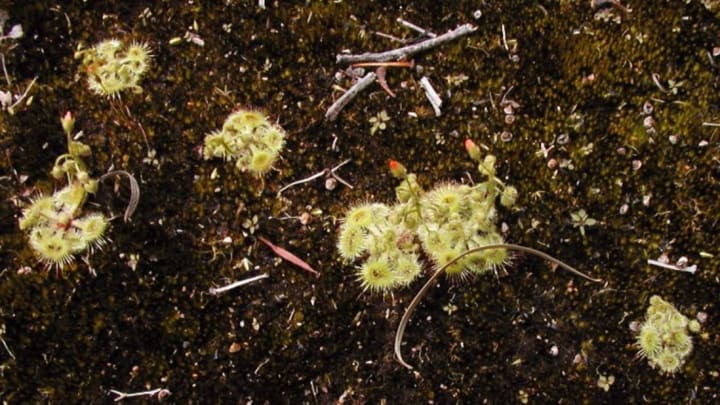Carnivorous plants are pretty awesome, taking revenge on the animal kingdom for our plant-eating ways, but they lack a certain sense of the dramatic. There’s no comparing the theatrics of a cheetah chasing down an antelope and biting into its neck to a venus fly trap just sitting there and snapping shut around an unsuspecting fly.
Thankfully, if you want a little more excitement from your green killers, there’s Drosera glanduligera. This rare Australian sundew has two types of thin, leafy protrusions that radiate from its center that had scientists puzzled for years. While most sundews use passive traps to capture their prey, the D. glanduligera takes a more active approach. Some of those leaves, German botanists confirmed in 2012, are touch-sensitive tentacles. When an insect comes in contact with them, the tentacles quickly snap inward, catapulting the bug towards the center of the plant where the other leaves ensnare it in their gluey covering. The trapped insect is then gradually drawn down into the sundew’s pit trap, where it’s digested.
Never mind that it’s cool—the researchers say that the tentacle-catapults also give the plant some advantages when competing for food. First, they increase the plant’s reach far beyond what most other carnivorous plants have, and the quick movement of prey from tentacle to “mouth” also prevents the meal from getting snatched away by another critter.
